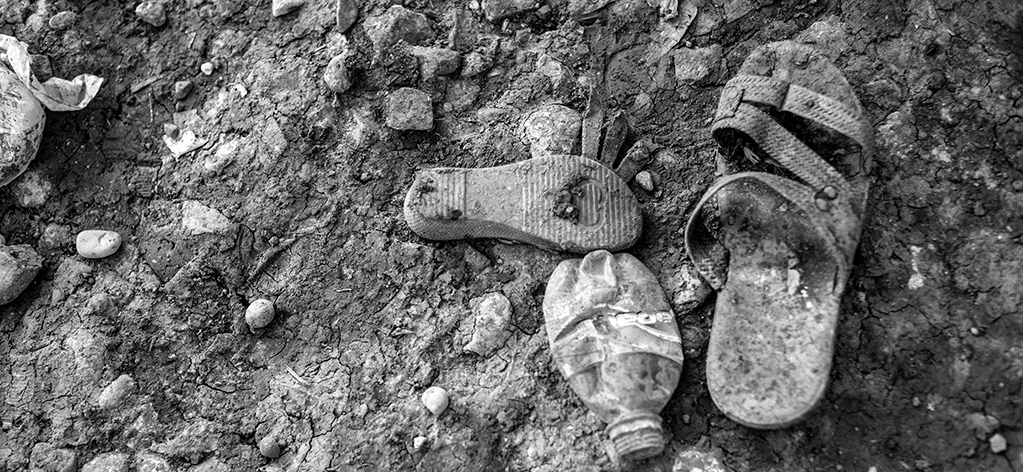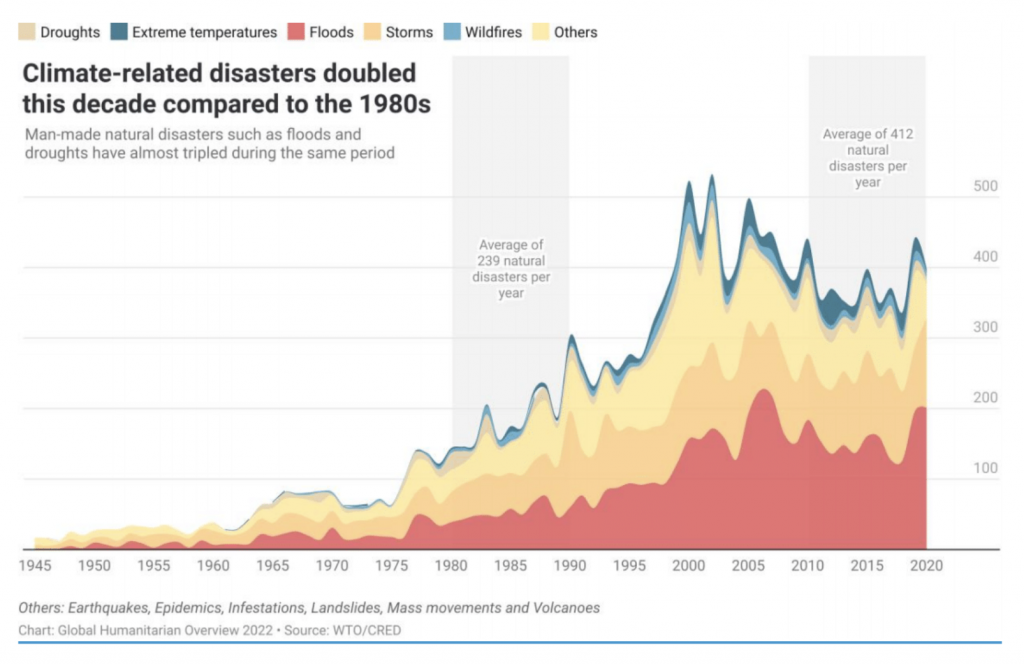
Disasters can have devastating consequences on displacement. Each year, millions of people are forced to flee their homes due to floods, tropical storms, and droughts – events that are increasing in frequency as a result of climate change.
Weather-related risks are not the sole drives of disaster displacement, however: natural hazards such as earthquakes, volcanic activity also cause widespread displacement. Vulnerable people living in some of the most fragile countries are disproportionately affected. Most of those leaving their homes are forced to find refuge within their own country – meaning that internally displaced people are often on the frontlines of climate change.
The impacts of climate change are numerous and can hamper return for those who have already been displaced. Limited natural resources, such as drinking water, are becoming scarce in parts of the world that host displaced people. Crops and livestock struggle to survive where conditions become too hot and dry, or too cold and wet, threatening livelihoods. In such conditions, climate change can act as a threat multiplier, exacerbating existing tensions and adding to the potential for conflict.
The 2021 IPCC report 216 million people could move within their own countries due to slow-onset climate change impacts by 2050.”
In a growing number of countries internally displaced persons are forced to flee because of the combined effect of conflict and disasters.

Key resources
- The Platform on Disaster Displacement.
- IDMC, Addressing Internal Displacement In The Context Of Climate Change, 2021
- IDMC, Disaster Displacement – A Global Review, 2021
- IDMC, GRID Chapter: Internal Displacement in a Changing Climate, 2021
- UNDRR, Addressing disaster displacement in disaster risk reduction policy and practice: A checklist, 2021
- IFRC, Displacement in a Changing Climate, 2021
- IFRC, Responding to Disaster Displacement in a Changing Climate: case studies in Asia Pacific, 2021.
- NRC, Disaster Displacement and Disaster Risk Reduction, 2019
- UNDRR, Words into Action Guidelines, 2019
- UNDRR, The Sendai Framework for Disaster Risk Reduction, 2015
- World Bank,Groundswell Part 2 : Acting on Internal Climate Migration, 2021